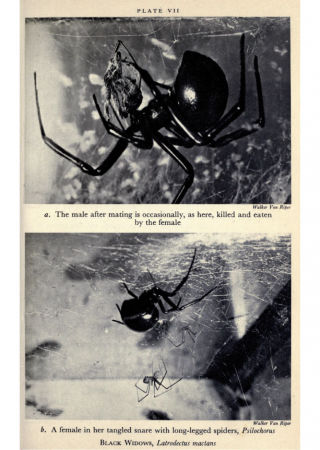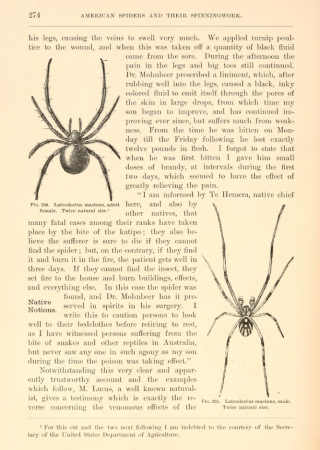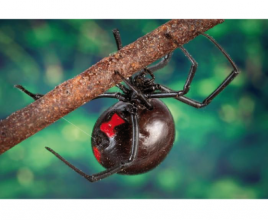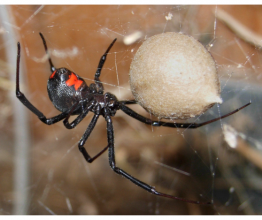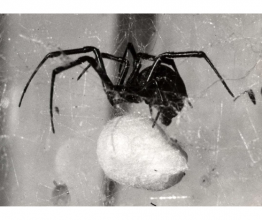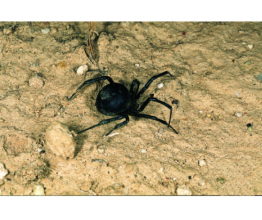Black widow
- ...black widows have a penchant for hiding under outhouse toilet seats, so bites on genitals are one of the most common injuries they cause?
- ...the term 'widow' comes from the fact that after mating, the much larger female often eats the male?
- ...the hourglass figure on the underside of the abdomen serves as a warning for carnivores that the spider is poisonous?
- ...theridiids create 4 to 9 egg sacs per year, each of which can contain up to 200 eggs?
- ...a female black widow can live up to four years, while the male usually dies much sooner, in the mandibles of a female?
- ...in earlier times, the bite of a black widow was treated by causing the patient to sweat profusely, for instance by sitting in a baker's oven?
- ...theridiid spiders are close relatives of scorpions and ticks?
Basic information:
Phylum - Arthropoda
Class - Arachnida
Maximum length - 13 mm
Eats - insects
Habitat - warm parts of all continents
Type of poison - neurotoxin
The American theridiid, also known as the black widow is a fairly small, but quite poisonous spider, belonging to the family Theridiidae. It is widespread on practically all continents, perhaps with the exception of Antarctica. A characteristic mark of this spider is a red hourglass mark on the underside of the abdomen. Its affinity for outhouses leads to people frequently being bitten in sensitive areas, when they go to relieve themselves. The bite of this spider causes extreme pain, nausea, vomiting, diarrhea, swelling of lymph glands and muscle cramps. Death is caused by paralysis of the breathing muscles.


